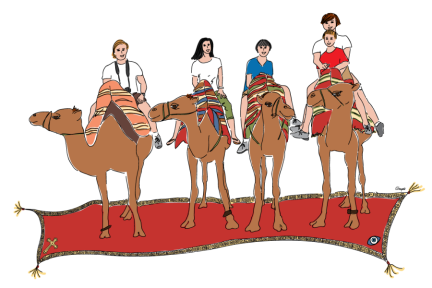Afro-Latino dance troupes, Cuban salsa, and jazz filled our time in Havana. Ornate costumes, intimate jazz cafes and electrifying salsa ensembles livened up our days and nights. I learned some distinguishing characteristics of these art forms and their origins. Cuban art and entertainment has been described as a “bastion of talent and a stronghold of style.”
filled our time in Havana. Ornate costumes, intimate jazz cafes and electrifying salsa ensembles livened up our days and nights. I learned some distinguishing characteristics of these art forms and their origins. Cuban art and entertainment has been described as a “bastion of talent and a stronghold of style.”
I was familiar with salsa being a Puerto Rican sound that was engineered further in the New York music scene of the 1970’s but I was not familiar with Cuban salsa. More specifically, there is a genre called Cuban son. Son appeared around 1917 in Havana. The African percussion and rhythmic instruments came from the African slaves’ journey to Cuba and were later joined by the instruments of marimba, bongos, quijada, timbales criollos and the cowbell.
The Afro-Latino dance performances we saw were very interpretive with their ornate costumes and trance-like, spiritual dance moves. The cultural blending that went into this music and dance genre is so rich and detailed that I would not do it justice summarizing it here, nor am I an expert. I do recommend reading further about it because it spans so many countries. The dance and music ensemble we watched were reportedly the 1991 Grammy winners of the Tropical Latin performance category. 
 Jazz also spans so many generations culturally and historically. It is also deeply rooted in African history and made a journey through political times as I recently learned at the American Jazz Museum in Kansas City. I never knew jazz descended from the African spirituals until recently. The shared humanity of musical expression is such a powerful, beautiful subject and art in our lives.
Jazz also spans so many generations culturally and historically. It is also deeply rooted in African history and made a journey through political times as I recently learned at the American Jazz Museum in Kansas City. I never knew jazz descended from the African spirituals until recently. The shared humanity of musical expression is such a powerful, beautiful subject and art in our lives.

We saw other minstrels in the squares of Old Havana and modern dancers in Fabrica de Arte Cubano gallery as the art and music scene of Havana permeated the landscape. Music played in the background of cafes, taverns, seaside promenades and lunch restaurants. The rhythm of Cuba dominated the spirit and soul and continues to play in my home as I consolidate my photojournalistic memories. Viva Cuba!
Our panoramic tour of Havana took us to the Malecon boardwalk, Revolution Square and a rainforest, surprisingly! That’s one of the things I loved about Havana—there was such a range of landscape. At Revolution Square, we were first introduced to the sassy vintage cars which are so iconic of Cuba.
Every vibrant color you can think of seemed like it was represented in that parking lot. A sign in the background “Viva Cuba Libre” caught my attention. “Long live Cuba’s freedom”. How much freer can you feel than in a topless convertible? 
 After some time exploring the cars, sitting in them, posing for pictures, we ventured on to other landmarks. Although this square’s parking lot had a concentration of vintage cars, we saw them throughout the landscape of Havana during our trip. We also rented one for an hour on our last morning there. The vintage cars are like beautiful jewels decorating the city streets. With possible impending transitions, many people have voiced that they hope this feature always remains part of the Cuban landscape.
After some time exploring the cars, sitting in them, posing for pictures, we ventured on to other landmarks. Although this square’s parking lot had a concentration of vintage cars, we saw them throughout the landscape of Havana during our trip. We also rented one for an hour on our last morning there. The vintage cars are like beautiful jewels decorating the city streets. With possible impending transitions, many people have voiced that they hope this feature always remains part of the Cuban landscape. 

photos by GIna Kingsley




